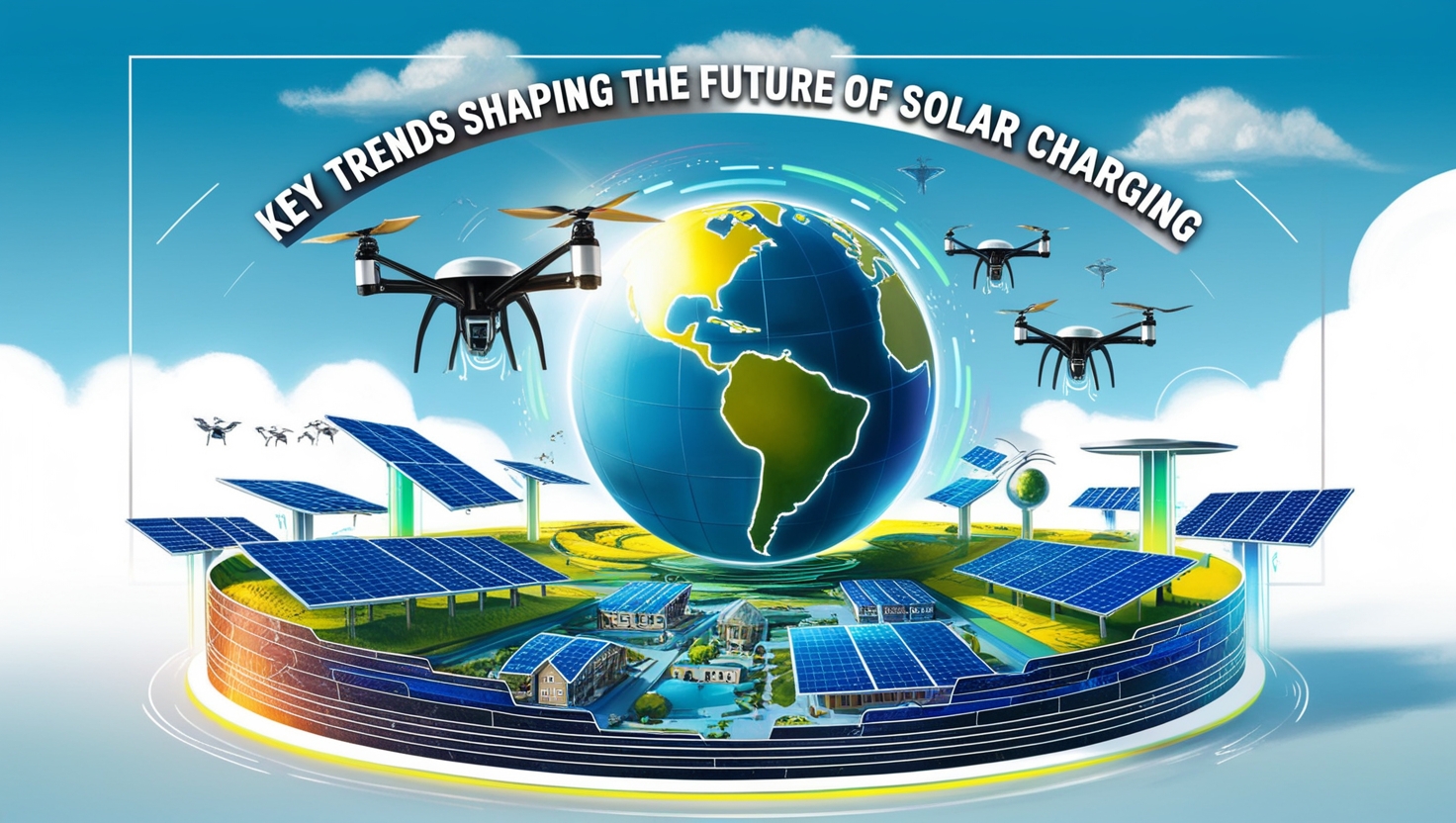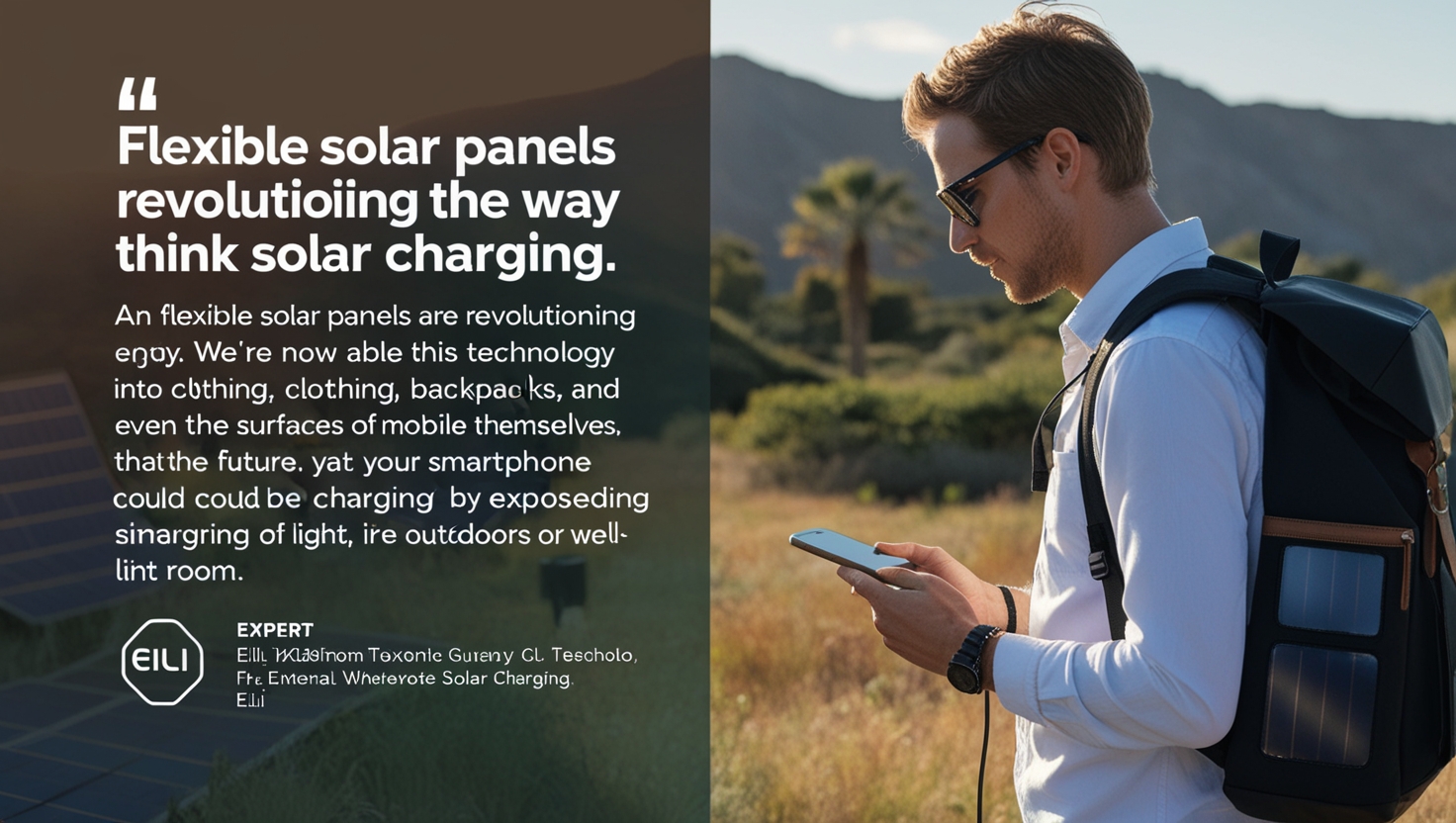Power & Charger
THE FUTURE OF SOLAR-POWERED MOBILE CHARGING
THE FUTURE OF SOLAR-POWERED MOBILE CHARGING: EXPLORING THE POTENTIAL AND INNOVATIONS
Solar energy is rapidly transforming the landscape of mobile device charging, offering a sustainable and innovative solution to our ever-growing power needs. As we delve into the exciting world of solar-powered charging for smartphones, tablets, and other portable devices, it’s clear that this technology holds immense potential for revolutionizing how we keep our gadgets powered up.
1. The Rise of Solar Energy in Mobile Technology
The integration of solar energy into mobile device charging is not just a fleeting trend; it’s a technological revolution that’s gaining momentum. Companies like Eili are at the forefront of this movement, developing cutting-edge solar charging solutions that promise to reshape the mobile industry. But what exactly does this solar-powered future look like, and how close are we to making it a reality?
1.1. Flexible Solar Panels: A Game-Changing Innovation
One of the most significant breakthroughs in solar charging technology is the development of flexible solar panels. Unlike their rigid predecessors, these innovative panels can be integrated into a wide variety of surfaces, including fabrics and plastics. This flexibility opens up a world of possibilities for solar charging applications.
An expert from Eili explains, “Flexible solar panels are revolutionizing the way we think about solar charging. We’re now able to integrate this technology into clothing, backpacks, and even the surfaces of mobile devices themselves. This means that in the future, your smartphone could be charging simply by being exposed to light, whether you’re outdoors or in a well-lit room.”
1.2. Key Trends Shaping the Future of Solar Charging
As we look towards the future of solar-powered mobile device charging, several key trends are emerging:
- Integrated Solar Charging in Devices: Some forward-thinking manufacturers have begun experimenting with smartphones and tablets that have solar panels built directly into their design. These panels, often integrated into the back of the device or even the screen itself, allow for continuous trickle charging whenever the device is exposed to light.
- Public Solar Charging Stations: As smart cities continue to evolve, we’re seeing an increase in public charging stations powered by . These stations not only provide a convenient way for people to charge their devices on the go but also promote the use of renewable energy in urban environments.
- Advanced Solar Power Banks: The next generation of solar power banks is here, offering superior performance and convenience. These portable chargers are becoming more efficient, lighter, and more durable, making them an essential accessory for tech-savvy travelers and outdoor enthusiasts.
- Solar Applications in Transportation: The transportation sector is also embracing solar charging technology. We’re seeing experiments with solar panels integrated into vehicle roofs, as well as the development of bus stops and train stations equipped with solar charging points.

2. Overcoming Challenges in Solar Charging Technology
While the potential of solar energy in mobile device charging is immense, there are still several challenges that need to be addressed:
- Energy Conversion Efficiency: Current solar panels used in mobile applications have limited efficiency. Researchers are working on improving this, with new materials showing promising results.
- Production Costs: The cost of producing high-quality, flexible solar panels remains relatively high. As technology improves and production scales up, we can expect these costs to decrease.
- Durability: Solar panels need to withstand daily wear and tear, especially when integrated into devices or clothing. Improving the durability of these panels is a key focus for researchers.
- Weather Dependence: Solar charging is inherently dependent on light availability. Developing more efficient energy storage solutions to complement solar charging is crucial.
3. Innovative Solutions on the Horizon
To address these challenges, researchers and companies like Eili are exploring innovative solutions:
- New Materials: Perovskite, a promising new material for solar cells, offers the potential for higher efficiency at lower costs. Research in this area is progressing rapidly.
- Hybrid Charging Systems: Combining solar charging with other forms of energy harvesting, such as kinetic or thermal energy, could provide more consistent charging capabilities.
- Advanced Energy Storage: Developments in battery technology, including solid-state batteries, could significantly improve the efficiency of solar charging systems.
- Artificial Intelligence Integration: AI could optimize solar charging by predicting energy needs and managing power distribution more efficiently.
4. The Impact on Mobile Device Design and Usage
As solar charging technology evolves, we can expect to see significant changes in how mobile devices are designed and used:
- Longer Battery Life: With continuous trickle charging from solar panels, devices could potentially last for days or even weeks without needing to be plugged in.
- Eco-Friendly Designs: Manufacturers may prioritize designs that maximize solar exposure, potentially changing the aesthetics of our devices.
- Reduced Dependence on Grid Power: As solar charging becomes more efficient, our reliance on traditional power sources could decrease significantly.
- New Applications: The availability of constant, renewable power could lead to the development of new mobile applications and features that were previously limited by battery constraints.
5. The Role of Solar Charging in Sustainable Technology
The adoption of solar charging technology in mobile devices aligns perfectly with the growing global focus on sustainability. By reducing our reliance on grid electricity, which often comes from non-renewable sources, solar charging can significantly decrease the carbon footprint of mobile device usage.
Furthermore, this technology has the potential to bring reliable charging capabilities to remote areas without stable electricity infrastructure, bridging the digital divide and empowering communities worldwide.
Conclusion:
The future of solar energy in mobile device charging is not just promising; it’s rapidly becoming a reality. With continuous innovation from companies like Eili and ongoing research in materials and efficiency, we are moving closer to a future where our mobile devices can self-charge continuously and sustainably.
As this technology continues to evolve, we can look forward to a world where the anxiety of a low battery becomes a thing of the past, replaced by the confidence that our devices are constantly being powered by the abundant energy of the sun.
Read more: Latest Solar Panel Technology for Mobile Devices
Reference: National Renewable Energy Laboratory: Solar Photovoltaic Technology Basics



